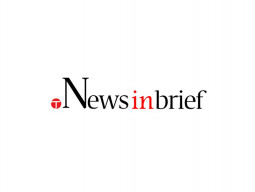
The first ever Multidimensional Poverty Index (MPI) for the country categorises as poor only 4.3 percent of the city’s households. The number of its income-poor households has come down from 10.3 percent in 2008-09 to 4.3 percent in 2014-15.
The MPI calculated for the country’s capital, Islamabad, is 3.1 percent and for the most populous city, Karachi, is 4.5 per cent.
Alarmingly, there are only half a dozen districts in the country with single-digit MPIs.
The MPI-based rankings have been compiled jointly by the Oxford Poverty and Human Development Initiative (OPHI) and United Nations Development Programme (UNDP). The MPI has been calculated using Alkire Foster methodology. Rather than relying only on income or consumption levels, it measures poverty using indicators for education, health and living standards of a population. The 15 indicators used for the purpose are access to water, sanitation, boundary walls, overcrowding, electricity, cooking fuel, assets, land and livestock (only for rural areas) in the living standards category; education quality, years of schooling and school attendance in the education category; and access to health facilities, immunisation, ante-natal care and assisted delivery in the health category.
The report also compares multidimensional poverty data for previous years. Islamabad is the only city with single-digit MPIs for 2008-09, 2010-11; 2012-13, and 2014-15. Its MPI has come down from 9.1 per cent in 2008-09 to 3.1 percent in 2014-15. Karachi’s MPI has come down from 10.5 percent in 2008-09 to 4.5 percent in 2014-15.
The other three districts with single digit MPIs are Rawalpindi, Jhelum and Attock. The 2014-15 MPI for Rawalpindi is 7.5 percent, for Jhelum 8.5 percent and for Attock 9.9 percent.
The previous years’ data for Attock shows tremendous progress in poverty reduction. Its MPI has been calculated at 32 percent in 2008-09, 26.8 percent in 2010-11, 16.4 percent in 2012-13 and 9.9 percent in 2014-15.
The report states that around 31.5 percent people in Peshawar live in abject poverty. The percentage for previous years is: 20.9 percent in 2012-13, 33.2 percent in 2010-11 and 44.1 percent in 2008-09.
Almost half of the Quetta residents (46.3 percent) live in abject poverty, the report says. Some of the districts with the highest MPIs are in Balochistan. Kila Abdullah’s MPI is 97 percent, Harnai’s 94.2 percent, Barkhan’s 93.6 percent, Sherani’s 90.6 percent, Torgarh’s 92 percent, Ziarat’s 90 percent, Chagai’s 89.2 percent, Kohlu’s 86.8 percent and Dera Bugti’s 88.4 percent.
The MPI findings show that 60.6 percent of the country’s population lacks access to natural gas for cooking and 48.5 percent of those enrolled in schools do not complete schooling. The report says four out of every 10 people (39 percent) have no assets. It says around 38 percent of the country’s population lives in one-room shelters and a third of the population does not have access to health facilities.
Published in The Express Tribune, July 19th, 2016.
































COMMENTS
Comments are moderated and generally will be posted if they are on-topic and not abusive.
For more information, please see our Comments FAQ